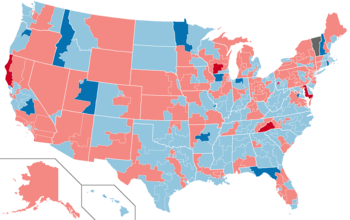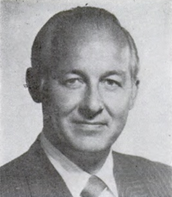United States House election, 1990
|
|
||||||||||||||||||||||||||||||||||
|---|---|---|---|---|---|---|---|---|---|---|---|---|---|---|---|---|---|---|---|---|---|---|---|---|---|---|---|---|---|---|---|---|---|---|
|
||||||||||||||||||||||||||||||||||
|
All 435 seats to the United States House of Representatives 218 seats were needed for a majority |
||||||||||||||||||||||||||||||||||
|
||||||||||||||||||||||||||||||||||

Results:
Democratic hold
Democratic pickup
Republican hold
Republican pickup
Independent pickup
|
||||||||||||||||||||||||||||||||||
|
||||||||||||||||||||||||||||||||||
The 1990 United States House of Representatives elections was an election for the United States House of Representatives in 1990 which occurred in the middle of President George H. W. Bush's term. As in most midterm elections, the President's Republican Party lost seats to the Democratic Party, slightly increasing the Democratic majority in the chamber. It was a rare instance, however, in which both major parties lost votes to third parties such as the Libertarian Party as well as independent candidates. Notable freshmen included independent Bernie Sanders of Vermont's at-large congressional district, becoming the first self-described socialist to hold a House seat since Vito Marcantonio.
Key to party abbreviations: AI=American Independent, C=Constitution, D=Democratic, G=Green, I=Independent, IP=Independence Party, L=Libertarian, PF=Peace & Freedom, R=Republican.
Key to color code: Blue=Democratic pickup; Red=Republican pickup.
...
Wikipedia


